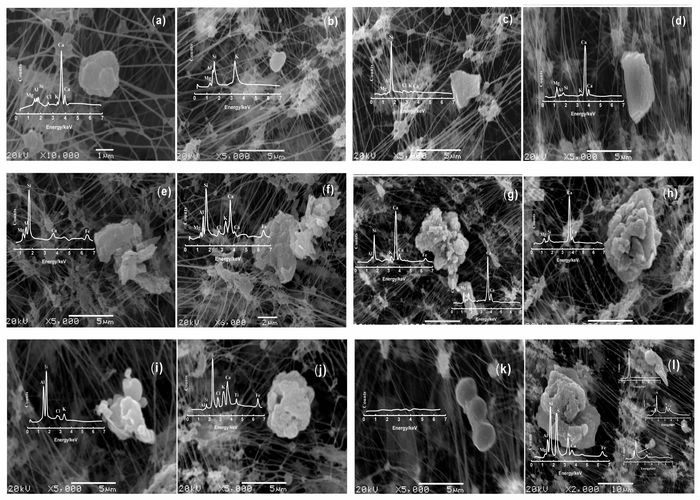Morphological and Element Composition Characteristics of the Aerosol Particles Collected from the Glacier No.1 at the Headwaters of rümqi River, Tianshan Mountains
Updatetime:2010-12-17From:
【Enlarge】【Reduce】
In order to study the chemical and physical characteristics of individual aerosol particles over the glacierized fields, 38 aerosol samples were collected during 2007 on the east branch of the Glacier No. 1 at the Headwaters of rümqi River, Tianshan Mountains (Glacier No. 1) (43°06′ N, 86°49′ E, 4 130 m a.s.l.). Micromorphology and element compositions of about 38 861 particles were determined by scanning electron microscopy combined with energy dispersive spectrometer (SEM\|EDX). Results suggest that most of the particles collected in the whole year are irregular mineral ones with the sizes between 0\^6 and 2\^5 μm and circularities between 1\^1 and 1\^4. Si\|rich and Ca\|rich particles are the dominant particles; S\|rich particles, soot and fly ash such anthropogenic species are scarce. Most of the aerosol particles here are from natural sources, and anthropogenic pollutions in this area are very weak. Aerosol characteristics in this area are similar to other dust source areas, but Ca content higher than other areas, owing to the effect of westerly. Back trajectories also suggest that most of the air masses arriving to this area are the high\|altitude air currents from the west, the Central Asia, which have an important influence on the atmospheric environment over the Glacier No.1. Characteristics of the aerosol collected from the Glacier No. 1 may represent the troposphere background conditions of the Central Asia dust source areas.
|
Secondary electron images of some typical aerosol particles (Picture/Journal of Glaciology and Geocryology) |
Appendix





